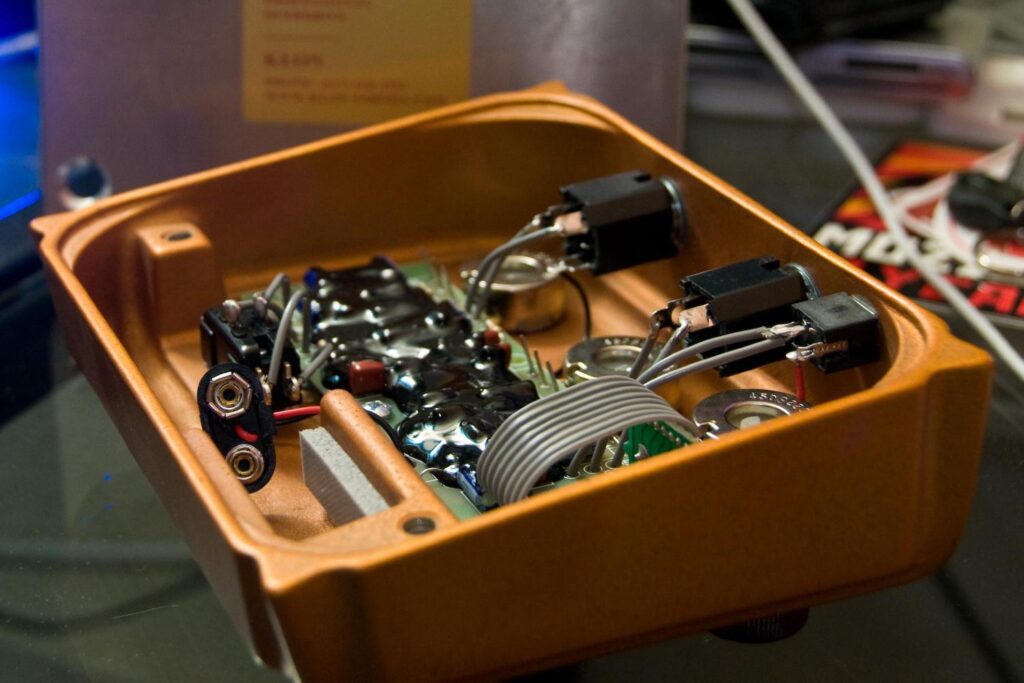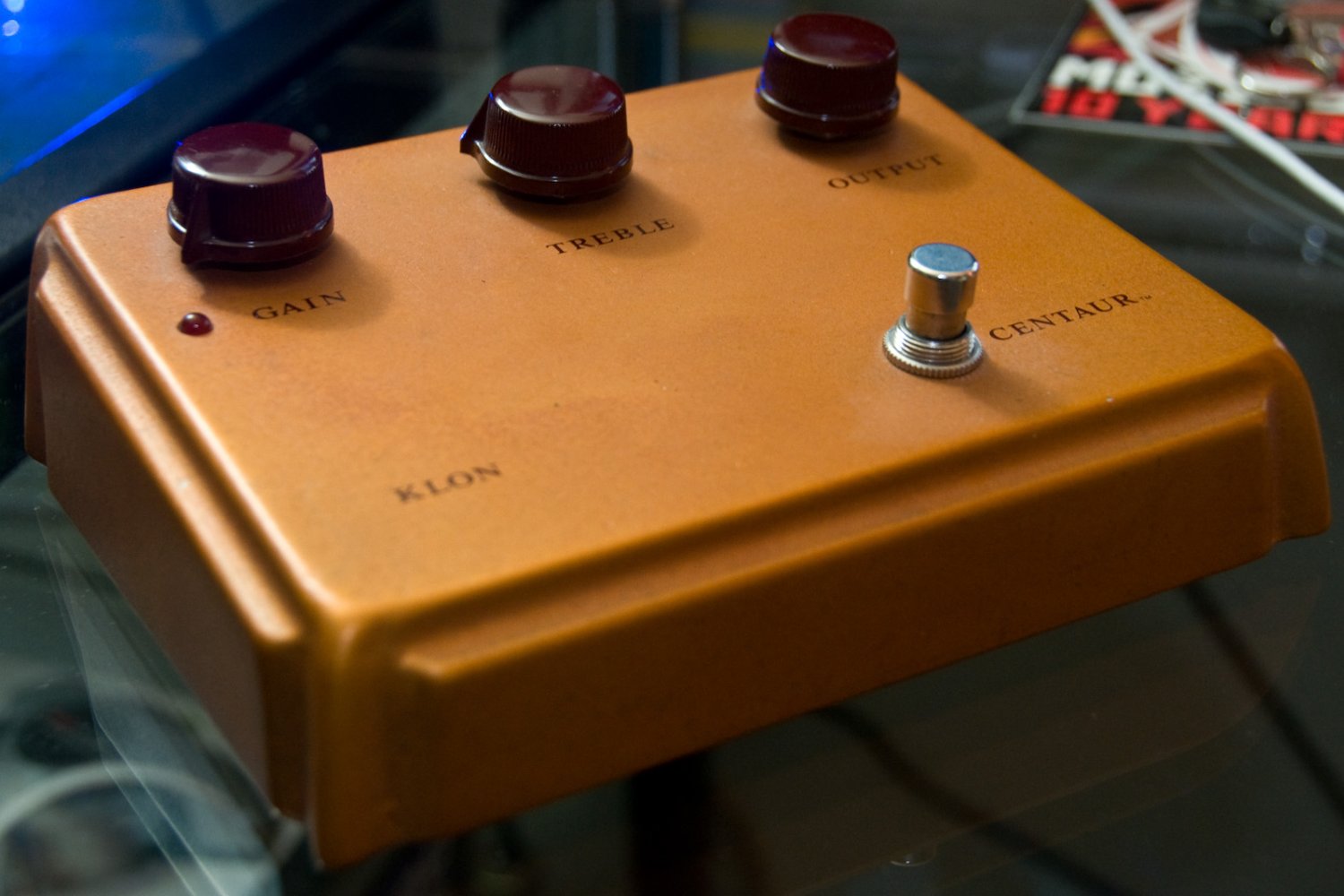"Kindly reminder: the ridiculous hype that offends so many is not of my making."
When it comes to pedals, none have been talked about, or lusted after more than the Klon Centaur. Fetching up to a staggering $20,000 on the second hand market, an original Centaur is by far the most sought after and expensive pedal on the planet and has inspired both an obsessive fan base and an endless myriad of clones, reissues and copies.
Bill Finnegan
So what is it that makes this pedal so unique? Could a simple overdrive really be worth all that money? According to its creator, Bill Finnegan, the answer is no. Finnegan discontinued the pedal in 2009 due to the unsustainable demand and in 2014 released a new version, the Klon KTR, famously inscribed with the words “Kindly remember: The ridiculous hype that offends so many is not of my making.”
Read up on all the latest interviews, features and columns here.
Ridiculous hype aside, the Centaur certainly is a unique and fantastic sounding overdrive and the reasons for that are worth exploring. When Finnegan built the original Klon in 1994, his goal was to create a simple boost pedal that provided a bit of grit but sounded more open and less boxy than a tube screamer. Despite essentially being a boost pedal, the Klon did provide a subtle midrange bump and a singular style of distortion thanks to its germanium diodes.
Finnegan succeeded in creating a more natural, transparent and amp-like overdrive than anything that had been heard before thanks to his unique four-pronged approach to the pedal’s circuit. Firstly, the Klon has an internal voltage converter that doubles its voltage. Running off an 18v power supply rather than a 9v means that the Klon Centaur has a very generous amount of headroom and produces higher order harmonic content.
Secondly, the Klon uses highly sought after low-gain NOS Germanium diodes that utilise hard-clipping rather than the soft-clipping more typical of an overdrive pedal. Despite hard-clipping being more associated with higher gain sounds, the Klon’s vintage style diodes provide a more subtle saturation and a very transparent response.

Thirdly, The Klon features a dual-ganged gain pot that shifts the pedal’s EQ response as the gain is increased. When the gain is turned up, bass frequencies are reduced, preventing the pedal from ever sounding woofy or muddy as it increases in saturation. Finally, the Klon utilises a very high quality signal buffer that ensures there is little to no signal loss when the pedal is disengaged.
It is very important to note that to truly get your money’s worth out of an original Centaur, you need to use it for its intended purpose. Finnegan’s design is intended to push the front end of an amplifier that is already breaking up further into natural overdrive to bring out more sustain and volume. This is as opposed to using the pedal itself solely as a source of distortion in conjunction with a clean amp. A Klon, with the gain dialled down and the volume set high, paired with a tube amp on the edge of breakup is certainly a trip to tone heaven, especially for the blues. In contrast, when used as a higher gain effect into a clean, sterile amp, the Klon still sounds great, but you’re not getting the full 3D experience.
For working musicians who don’t necessarily own a private island or have a place on the board at De Beers, there are plenty of fantastic Klon-inspired pedals on the market. Transparent boosts and overdrives have become abundant since the Klon’s inception, and whilst none of them perhaps quite capture the magic, or the myth, of the original, the Klon Centaur no longer stands alone as a more high fidelity alternative to traditional overdrives like the tube screamer.
On the cheaper end of the scale, the EHX Soul Food has secured a place as a much beloved alternative to the Centaur and KTR. Featuring a very transparent EQ profile and boosted power rails for extended headroom and definition, the Soul Food is a great way to boost your signal and add a hair of gain to your sound without over-seasoning your tone or breaking the bank.
Moving up in price range slightly, the Wampler Tumnus is another great option for Klon-like tones at a reasonable price. The Tumnus is ultra-compact, perfect for pedalboards on which real estate is scarce and it sounds fantastic. You can even use it as a buffer, because just like the Klon, the Tumnus is not true-bypass. Instead, faithful to the source material, this pedal contains a buffered bypass tone that is legendary in its own right.
For those looking a little higher up the shelf, the J. Rockett Archer is one of the most popular and highly praised Klon alternatives on the market. Getting mighty close to the sound of the original thanks to its Germanium diodes, the volume control on the Archer is very powerful and drives fairly hard relatively early. Like the original Klon, this allows you to hit the front end of your amp hard and get those magical dynamic, natural drive tones.
Another great, more recent option on the market for the connoisseurs amongst us is the Warm Audio Centavo. The folks at Warm Audio claim their product to be a true-to-original recreation of the Klon that completely recaptures its legendary sound. I’ll leave that assessment up to you, but I will say it certainly looks the part.
So, alternatives aside, what is it that makes the original Klon Centaur so special? Is it the majesty of its sound or merely its scarcity that has driven prices up to these astronomical levels? A little of both to be sure. However, perhaps much like a Dumble amplifier or a ‘59 Les Paul, it is not the circuitry of the object itself that elevates players to new heights, but the responsibility one feels when using them.
If you’re regularly plugging your guitar into a $20,000 pedal, you’re going to play your ass off not only to prove that you’re worthy of it, but to prove that you’re not completely out of your mind. And perhaps, therein lies the magic.
Keep up with Bill Finnegan, Klon and more here.







